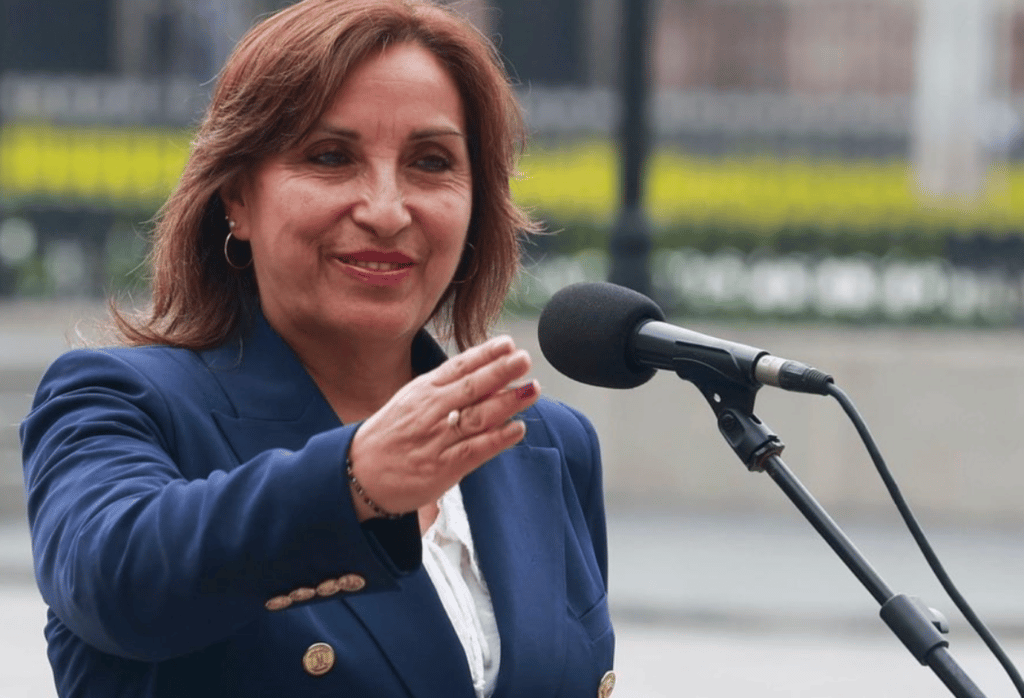Peru got its first-ever female head of state last week, after Dina Boluarte was sworn in as the new President.
The former Vice President who comes to power following a complex set of circumstances, has replaced Pedro Castillo as the country’s leader.
The move happened after Castillo — described as the “insurrectionist former President” — surprisingly popped up on television, announcing he was dissolving Congress and implementing a nationwide curfew.
He was abandoned by his political allies within a few hours, then detained by police on charges of rebellion.
Castillo made his shock announcement at noon local time. By three in the afternoon, he had been impeached and replaced by his VP — following “the world’s shortest-lived dictatorship”, as journalist Daniel Alarcón reported and put it.
A host of important allies to Castillo began resigning, including his personal lawyer and his ministers. Public condemnations were released by the nation’s armed forces and the police, as Castillo was seen leaving the palace, and heading to the Mexican embassy to apply for asylum in Mexico — though he never made it there. The police arrested the 53-year old.
Boluarte reacted on Twitter to Castillo’s actions, saying it would worsen “the political and institutional crisis” in Peru.
Meanwhile thousands have gathered in the nation’s capital, Lima, to protest Castillo’s overthrow.
According to state media, demonstrators broke the windows of a police station and blocked several highways, calling for Boluarte’s resignation and the closure of Congress.
One protester told AP “Congress has given us a kick and has mocked the popular vote. Let’s take to the streets, let’s not let ourselves be governed by this mafia-like congress.”
Bouluarte told protesters to “calm down,” and that if the situation “warrants it,” her new government would consult with Congress to hold an early presidential vote, though that would require a change to Peru’s 1993 constitution.
“I know there are voices indicating early elections and this is democratically respectable,” she said on Thursday.
The swearing in of Cabinet
On Saturday, Boluarte swore in her Cabinet, asking each of the 17 new ministers (9 men and 8 women) to pledge against corruption and to perform their duties “loyally and faithfully without committing acts of corruption.”
The Cabinet members were donned in red-and-white sashes tied around their waists and asked to kneel before the new President and a large crucifix.
Ministers include Pedro Angulo, an anti-corruption prosecutor who has also been appointed Prime Minister, and Alberto Otárola, a lawyer who will serve as Minister of Defense.
Ex-Central Bank Economist Alex Contreras was named New Finance Chief, while former Consul General to Canada, Ana Gervasi has been appointed Minster of Foreign Affairs.
In her first address as President, Boluarte promised her citizens a government that would be open to dialogue, and one that would work for Peru’s economic reactivation towards “the path of progress.”
“I want to assure you that I have worked hard to form a ministerial Cabinet for unity and democratic consolidation (and) that is at the level of what the country requires,” Boluarte said. “… The national unity government will be for all Peruvians.”
She called for a “political truce to install a government of national unity” and promised to fight corruption with the help of the country’s Attorney General’s Office and Comptroller’s Office.
“My first task is to fight corruption, in all forms,” Boluarte said. “I have seen with revulsion how the press and judicial bodies have reported shameful acts of robbery against the money of all Peruvians, this cancer must be rooted out.”
Who is Dina Boluarte?
Born in 1962 in the southern Andean region of Apurimac, southwest of Lima, Boluarte was a rural schoolteacher before embarking on a career in politics.
The mother of two is fluent in Spanish and Quechua, and also worked as a lawyer with Peru’s national registry and identification office, which oversaw birth, death and marriage certificates.
In 2007, she became an advisor to senior management at the National Registry of Identification and Civil Status in Surco, a district of Lima.
She worked within Castillo’s administration as Vice President, as well as stints as Minister of Development and Social Inclusion.
In a 2021 interview with CNN Boluarte said: “We need a Congress that works for the needs of Peruvian society and that coordinates positively with the Executive so that both powers of State can work in a coordinated manner to meet the multiple needs of Peruvian society. We do not want an obstructionist Congress (…) At no time have I said that we are going to close Congress.”
Peru has suffered a rotation of presidents in the past several years, with six different presidents in as many years — including three in the span of a single week in November 2020 after the removal of then-President Martín Vizcarra for corruption charges.
The country of 33 million has been struggling with the worst drought in a half-century, decimating the agricultural industry and whole communities in the southern Andes.
Last week, the government announced that the country was experiencing its fifth wave of COVID-19 infections — just a few weeks after it officially opened its borders to the world.
Since the pandemic began, the country has recorded roughly 4.3 million infections and 217,000 deaths.


